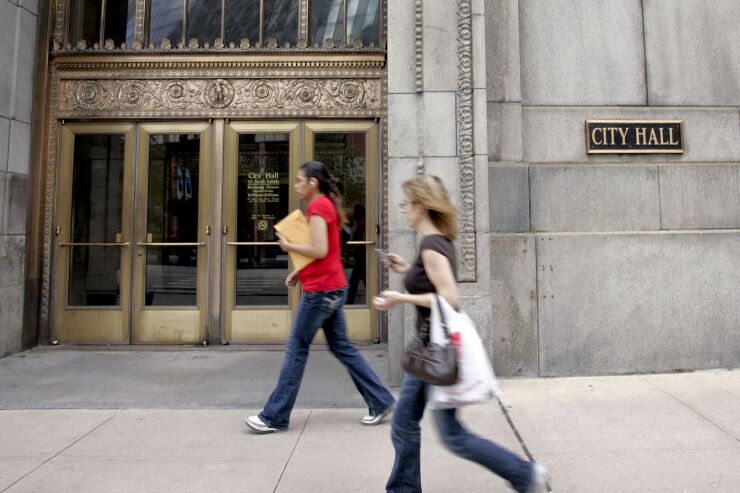S&P Global Ratings has revised the outlook on Chicago’s general obligation bonds to stable from positive, the rating agency announced Thursday. S&P affirmed its BBB-plus rating on the bonds.
The downward revision reflects budgetary pressures that have not been counterbalanced by new revenue growth, S&P said. Specifically, S&P cited rising public safety labor costs, recent legislative changes to pension contributions and the ongoing costs of migrant arrivals.
“This combination exacerbates the financial strain Chicago is facing, particularly since outyear budget gaps are also sizable,” the rating agency said in its report.
Bloomberg News
The city had $10.3 billion of general obligation debt outstanding as of Dec. 31, 2022, according its
When S&P
Those factors remain in effect, S&P said Thursday, but other measures that were integral to long-term structural balance, like annual property increases tied to the Consumer Price Index, have been abandoned. And S&P said the aforementioned trio of rising costs present “greater uncertainty about Chicago’s ability to maintain budget stability over the short-to-medium term.”
Illinois Gov. JB Pritzker said yesterday that his fiscal year 2025 budget will ask for $181.7 million to address migrant arrivals in the city of Chicago and Cook County. And Chicago’s 2024 budget included $150 million to pay for migrant costs.
But S&P estimates the city spent $275 million on migrants in 2023 alone. And Illinois Comptroller Susana Mendoza’s
“It seems likely that 2024’s costs will exceed budgeted amounts,” S&P observed in its report.
In a
Absent state and federal government support, the impact of the crisis on Chicago’s bottom line could be significant, S&P added. Bipartisan immigration legislation failed in Congress earlier this month.
Meanwhile, multiple bills wending their way through the state legislature in Springfield would change pension contributions, most notably to stay compliant with IRS “safe harbor” rules around minimum benefit requirements. Those changes “will also increase costs,” S&P said, and will up Chicago’s required pension contributions by $69 million starting in 2025.
Those developments and others, involving tier II changes, have yet to be considered in Chicago’s outyear budget forecast.
S&P affirmed its BBB-plus rating and noted that Chicago’s reserve levels remain high; its expenditures during 2023 will likely give it a “modest surplus” in its corporate fund at year’s end; and it has not seen a decline in its tax base from falling commercial real estate property values in the Loop.
“We continue to view Chicago’s economy as a strength that has allowed the city to effectuate changes that have altered its creditworthiness fundamentally,” S&P said.
Chicago has enjoyed a series of positive rating actions in recent years, most recently Moody’s Investors Service
Kroll Bond Rating Agency rates Chicago GOs A with a positive outlook.
